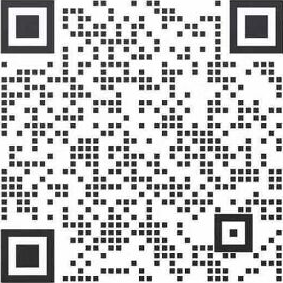2018年下半年教师资格面试-高中英语-试讲及答辩-解析(第二批)
高中英语 阅读
一、回顾
题目来源1月5日 下午 山西省 太原市 面试
试讲题目1.题目:Body Language
2.内容:
Yesterday, another student and I, representing our university's student association, went to the Capital International Airport to meet this year's international students. They were coming to study at Beijing University. We would take them first to their dormitories and then to the student canteen. After half an hour of waiting for their flight to arrive, I saw several young people enter the waiting area looking around curiously. I stood for a minute watching them and then went to greet them.
The first person to arrive was Tony Garcia from Colombia, closely followed by Julia Smith from Britain. After I met them and then introduced them to each other, I was very surprised. Tony approached Julia, touched her shoulder and kissed her on the cheek! She stepped back appearing surprised and put up her hands, as if in defence. I guessed that there was probably a major misunderstanding. Then Akira Nagata from Japan came in smiling, together with George Cook from Canada. As they were introduced, George reached his hand out to the Japanese student. Just at that moment, however, Akira bowed so his nose touched George's moving hand. They both apologized - another cultural mistake!
Ahmed Aziz, another international student, was from Jordan. When we met yesterday, he moved very close to me as I introduced myself. I moved back a bit, but he came closer to ask a question and then shook my hand. When Darlene Coulon from France came dashing through the door, she recognized Tony Garcia's smiling face. They shook hands and then kissed each other twice on each cheek, since that is the French custom when adults meet people they know. Ahmed Aziz, on the contrary, simply nodded at the girls. Men from Middle Eastern and other Muslim countries will often stand quite close to other men to talk but will usually not touch women.
As I get to know more international friends, I learn more about this cultural "body language". Not all cultures greet each other the same way, nor are they comfortable in the same way with touching or distance between people. In the same way that people communicate with spoken language, they also express their feelings using unspoken "language" through physical distance, actions or posture. English people, for example, do not usually stand very close to others or touch strangers as soon as they meet. However, people from places like Spain, Italy or South American countries approach others closely and are more likely to touch them. Most people around the world now greet each other by shaking hands, but some cultures use other greetings as well, such as the Japanese, who prefer to bow.
These actions are not good or bad, but are simply ways in which cultures have developed. I have seen, however, that cultural customs for body language are very general - not all members of a culture behave in the same way. In general, though, studying international customs can certainly help avoid difficulties in today's world of cultural crossroads!
3.基本要求:
(1)全英文试讲。
(2)设计语篇教学。
(3)有互动环节。
答辩题目
What can students get from this reading class?
How many steps are there in a complete class?
二、解析
【教学过程】
Teaching aims:
Knowledge aim:
Students can acquire some useful knowledge about different body languages and realize the culture differences they reflect.
Ability aim:
Students will use the reading skills proficiently.
Emotional aim:
Students will foster the awareness of cross-culture communication.
Key and difficult point:
Key Point: Students will be able to obtain the required information from the text.
Difficult Point: Students can recognize and be interested in the culture diversities.
Teaching procedure:
Step 1: Warming-up
1. Greet the students.
2. Do some actions and let students guess the meaning the teacher wants to convey.
Step 2: Pre-reading
Show the picture in the airport and ask students to predict what is going to happen. Several students will stand up and express their predictions.
Step 3: While-reading
1. Read the text for the first time and students need to check their guessing and find out how many countries are mentioned in this passage.
2. Read again, then complete the table with the detailed information they have found. The answers will be checked together.

【答辩题目解析】
What can students get from this reading class?
【参考答案】
I believe my students will not only obtain the knowledge of various body language used by people who have different backgrounds, but also get the practical reading skills after this class. For the cross-culture knowledge, students can acquire it from both this passage and the Internet, which helps them make full use of the textbook and extra curriculum resources. For the reading skills, I will remind them to pay attention to the key words and then locate the correct answers.
How many steps are there in a complete class?.
【参考答案】
When I was designing this reading course, the model I used is PWP. It contains five steps: warming-up, pre-reading, while-reading, post-reading, summary and homework. The main steps are pre-reading, while-reading, and post-reading. In each step, students need to finish different tasks, such as prediction, skimming or scanning, retelling or role-play. It is an efficient and rational way to design skill-based course. Thank you.
(责任编辑:李明)
- 2024湖南永州市江华瑶族自治县教师资格认定公告
- 2024春季湖南长沙市开福区初级中学教师、小学教师、幼儿园教师资格认定公告
- 2024上半年湖南湘江新区(岳麓区)初级中学教师、小学教师、幼儿园教师资格认定公告
- 2024上半年福建南平市浦城县教育局开展幼儿园、小学、初级中学教师资格认定工作公告
- 2024上半年教师资格面试成绩公布时间:6月14日
- 2024上半年辽宁丹东市中小学教师资格考试(面试)新增学科考试范围通知
- 江西教资面试准考证打印入口2024上半年
- 2024上半年江西教师资格证准考证查询时间
- 2024上半年江西教师资格证面试准考证打印入口|打印时间
- NTCE-2024上半年江西中小学教资面试准考证打印入口




















